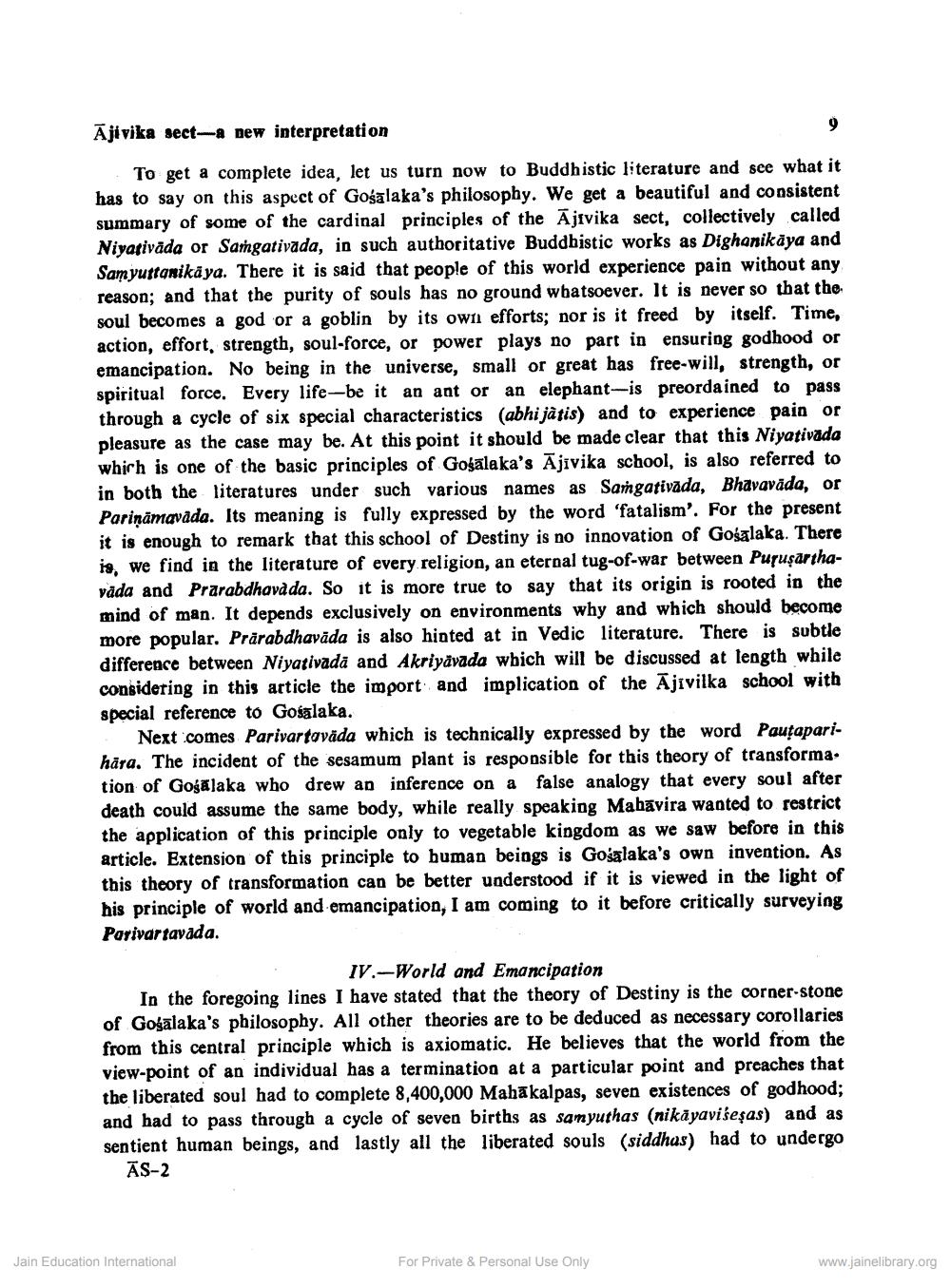________________
Ājivika sect--a new interpretation
To get a complete idea, let us turn now to Buddhistic literature and see what it has to say on this aspect of Gośālaka's philosophy. We get a beautiful and consistent summary of some of the cardinal principles of the Ājivika sect, collectively called Niyarivada or Sangativada, in such authoritative Buddhistic works as Dighanikāya and Samyustanikaya. There it is said that people of this world experience pain without any reason; and that the purity of souls has no ground whatsoever. It is never so that the soul becomes a god or a goblin by its own efforts; nor is it freed by itself. Time, action, effort, strength, soul-force, or power plays no part in ensuring godhood or emancipation. No being in the universe, small or great has free-will, strength, or spiritual force. Every life-be it an ant or an elephant-is preordained to pass through a cycle of six special characteristics (abhi jātis) and to experience pain or pleasure as the case may be. At this point it should be made clear that this Niyativada which is one of the basic principles of Gośālaka's Ājivika school, is also referred to in both the literatures under such various names as Sangativada, Bhavavāda, or Parināmavada. Its meaning is fully expressed by the word 'fatalism'. For the present it is enough to remark that this school of Destiny is no innovation of Gošalaka. There is, we find in the literature of every religion, an eternal tug-of-war between Puruşarthavada and Prarabdhavada. So it is more true to say that its origin is rooted in the mind of man. It depends exclusively on environments why and which should become more popular. Prärabdhavāda is also hinted at in Vedic literature. There is subtle difference between Niyativada and Akriyavada wbich will be discussed at length while considering in this article the import and implication of the Ājivilka school with special reference to Gosalaka.
Next comes Parivartavāda which is technically expressed by the word Pautaparihāra. The incident of the sesamum plant is responsible for this theory of transforma. tion of Gośülaka who drew an inference on a false analogy that every soul after death could assume the same body, while really speaking Mahavira wanted to restrict the application of this principle only to vegetable kingdom as we saw before in this article. Extension of this principle to buman beings is Gošalaka's own invention. As this theory of transformation can be better understood if it is viewed in the light of his principle of world and emancipation, I am coming to it before critically surveying Parivartavada.
IV.-World and Emancipation In the foregoing lines I have stated that the theory of Destiny is the corner-stone of Gośālaka's philosophy. All other theories are to be deduced as necessary corollaries from this central principle which is axiomatic. He believes that the world from the view-point of an individual has a termination at a particular point and preaches that the liberated soul had to complete 8,400,000 Mahakalpas, seven existences of godhood; and had to pass through a cycle of seven births as samyuthas (nikāyaviseşas) and as sentient human beings, and lastly all the liberated souls (siddhas) had to undergo
AS-2
Jain Education International
For Private & Personal Use Only
www.jainelibrary.org




